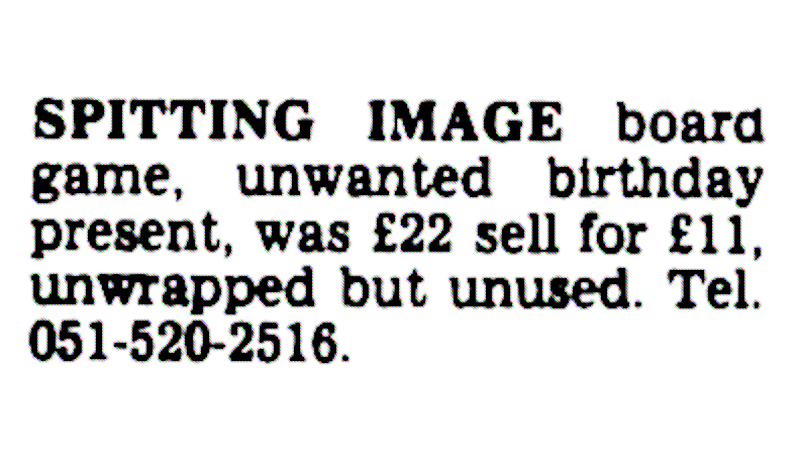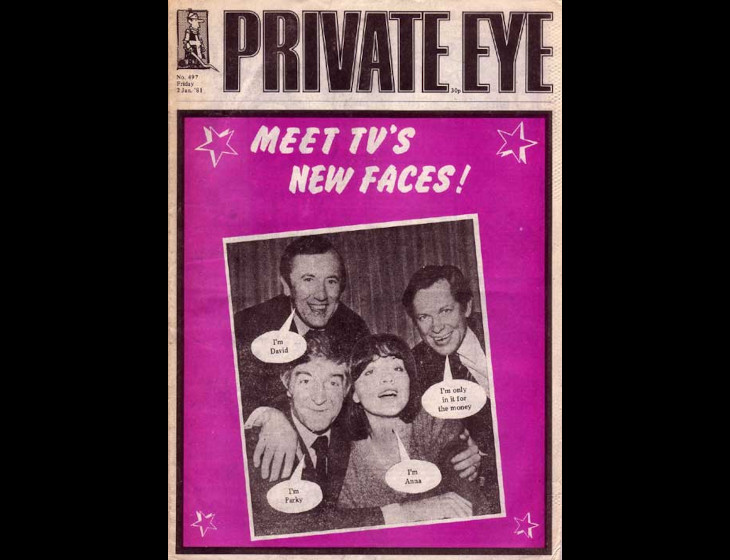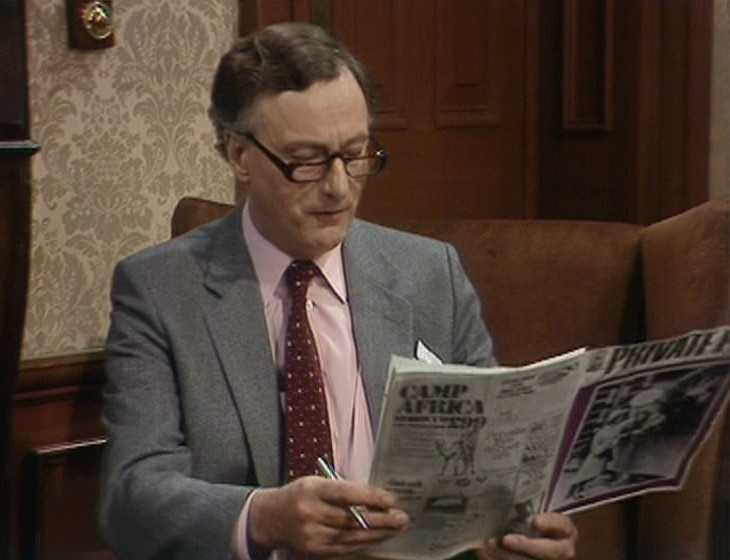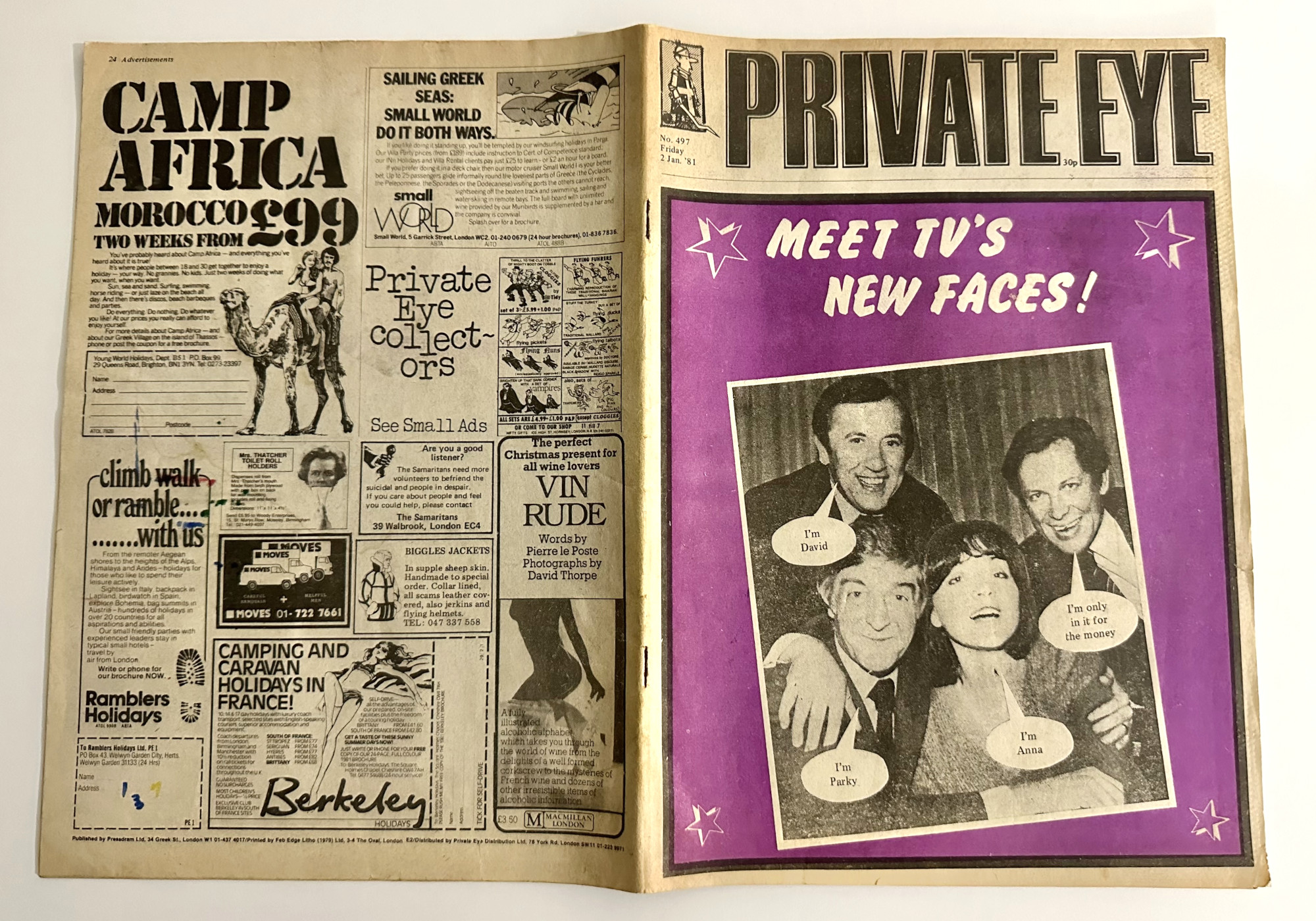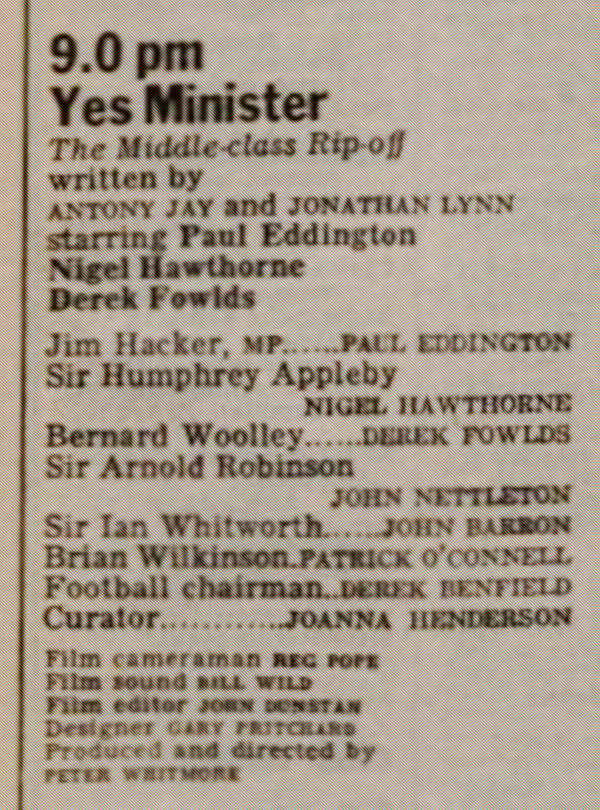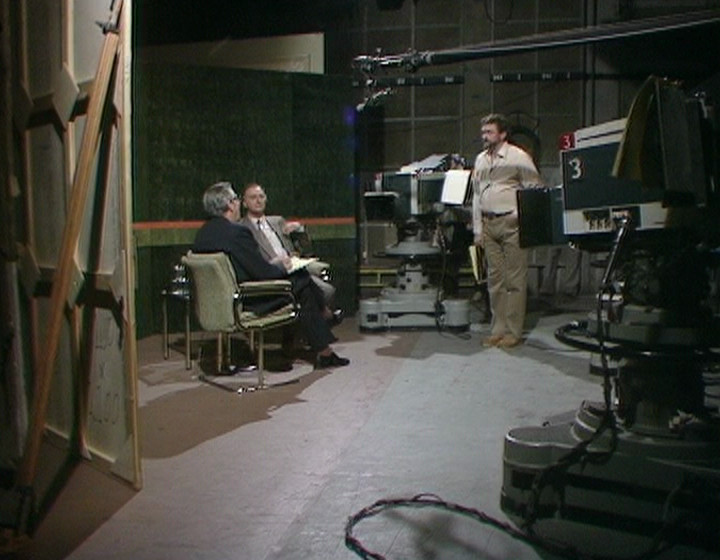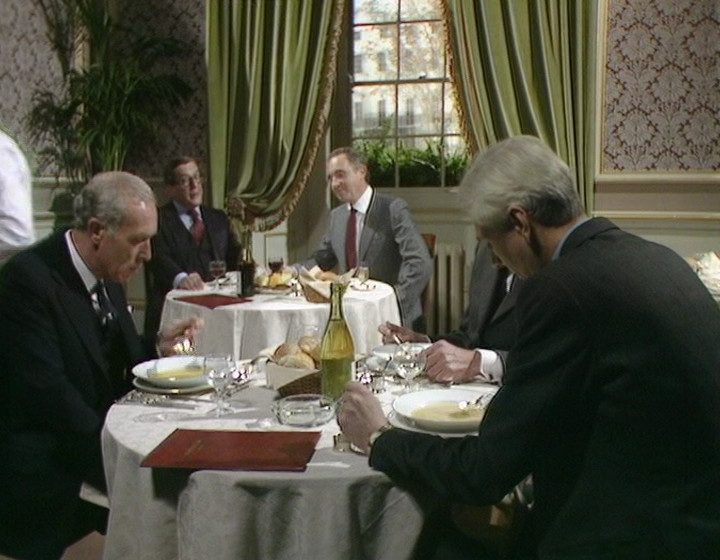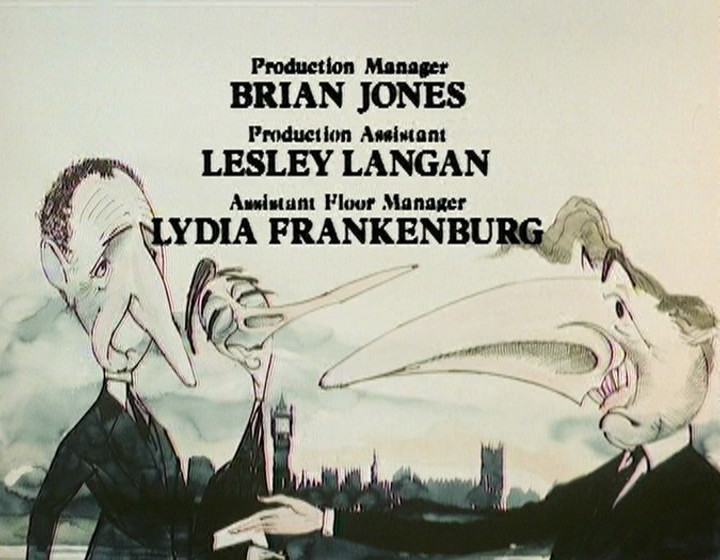Part One • Part Two • Part Three • Part Four • Part Five
Content warning: very mild nudity.
When we last left Spitting Image, the team had just got themselves into a spot of bother. On the 10th June 1984, the show broadcast the following message, for one single frame:
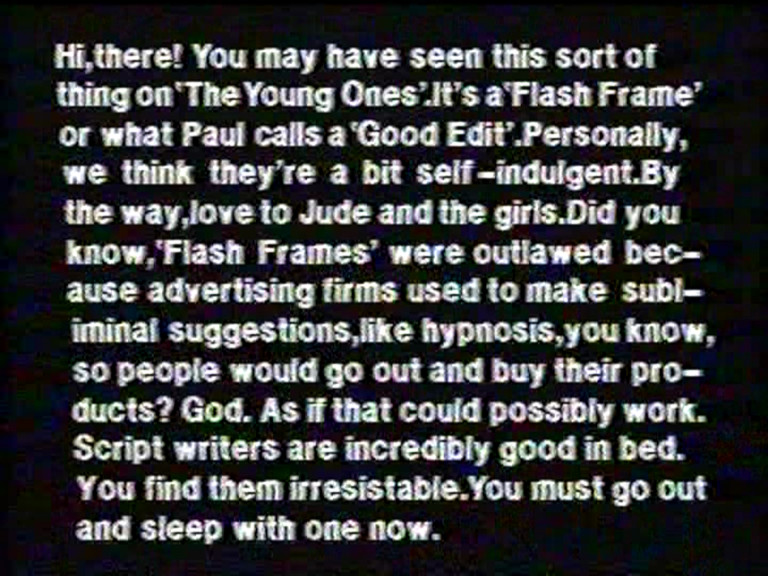
Our old friend Tooth and Claw reveals the immediate fallout:
“It was not many hours before a viewer with a freeze-frame facility brought it to the attention of the IBA. Stephen Murphy, the IBA programme officer who had been so indulgent with Spitting Image in the early days, called up John Lloyd with a new tone of voice: ‘My dear boy, you’ve broken the law. Haven’t you read the Broadcasting Act?’ Lloyd confessed that he hadn’t but said he had read the offending text over to Central’s duty lawyer who had cleared it and had, in any case, thought the prohibition related specifically to advertising. Murphy, apparently unimpressed, hung up with: ‘You’ll be hearing from me at some future date.'”
When we discussed Labour’s Party Political Broadcast from 1970 and Ross McWhirter, we spent a lot of time with the ITA and the Television Act 1964. By the time we get to Spitting Image, the ITA has become the IBA, and the Television Act 1964 has been replaced with the Broadcasting Act 1981.1
The relevant section of the new Broadcasting Act is 4(3):
“It shall be the duty of the Authority to satisfy themselves that the programmes broadcast by the Authority do not include, whether in an advertisement or otherwise, any technical device which, by using images of very brief duration or by any other means, exploits the possibility of conveying a message to, or otherwise influencing the minds of, members of an audience without their being aware, or fully aware, of what has been done.”
You will note that this is word-for-word identical to section 3(3) of the Television Act 1964. You will also note that Lloyd’s impression that “the prohibition related specifically to advertising” is most definitely wrong; subliminal material is clearly stated to be banned “whether in an advertisement or otherwise”.
Tooth and Claw continues:
“On this wording, it looked as if anyone who cared to bring a prosecution would have the IBA bang to rights. On the day after the incident, the IBA sternly reprimanded Central as the responsible company and Central told Lloyd never to do such a thing again, making it an area to which he would irresistibly return.
It was the quality of naughtiness, rather than politically-motivated satire, that was now becoming Spitting Image‘s defining characteristic.”
In fact, nobody did care to bring a prosecution for the above incident. But Tooth and Claw does state that somebody had “complained to the IBA’s director-general, John Whitney, in the strongest terms”.
Who was that somebody? None other than a certain Norris McWhirter. This fact is not only mentioned in Tooth and Claw, but also evidenced by letters in the IBA archive. Ross McWhirter was murdered by the IRA in 1975; his brother Norris had clearly taken up Ross’s crusade against subliminal messages, whether in good faith or otherwise.
But for now, there is where things ended. There were no mentions of the incident in the last episode of the series on the 17th June, though the temptation must surely have been strong.2 And after that, not even Spitting Image could cause trouble while they were off-air. Central and the IBA would get six months respite from all this nonsense, at least.
[Read more →]
Read more about...
best of, freeze-frame gonna drive you insane, spitting image


